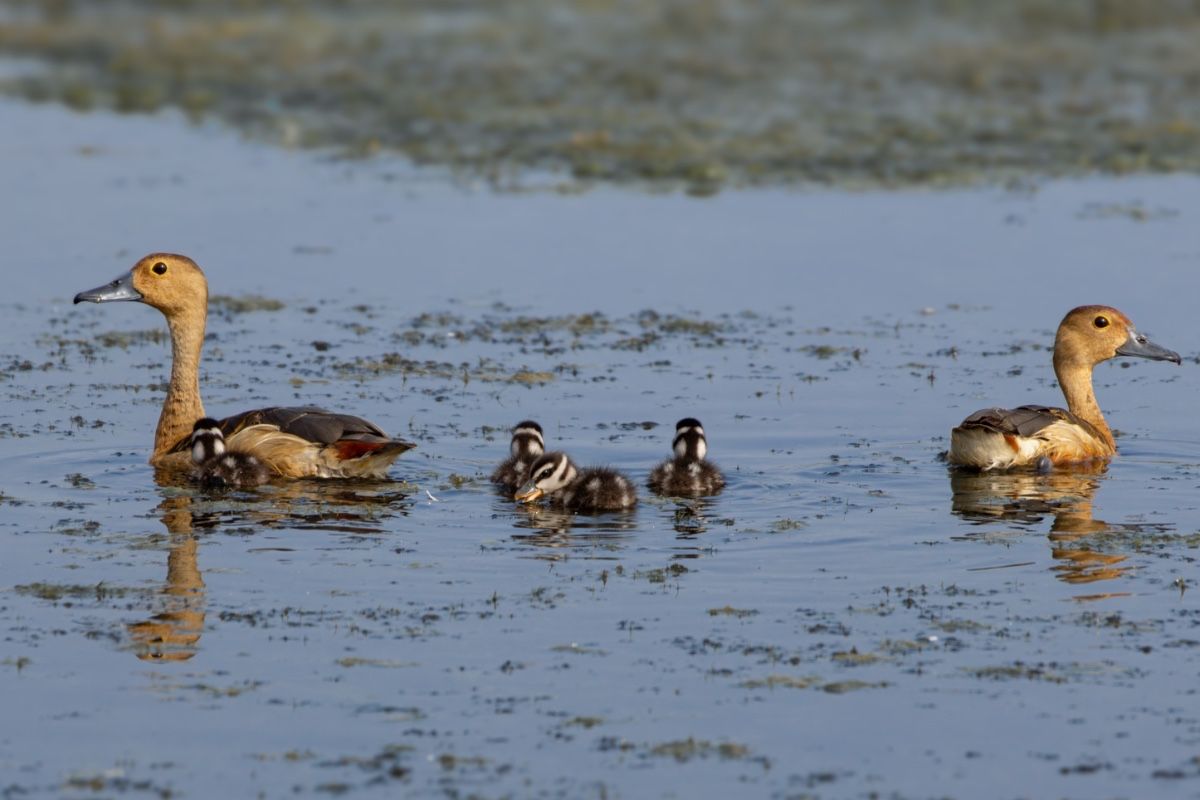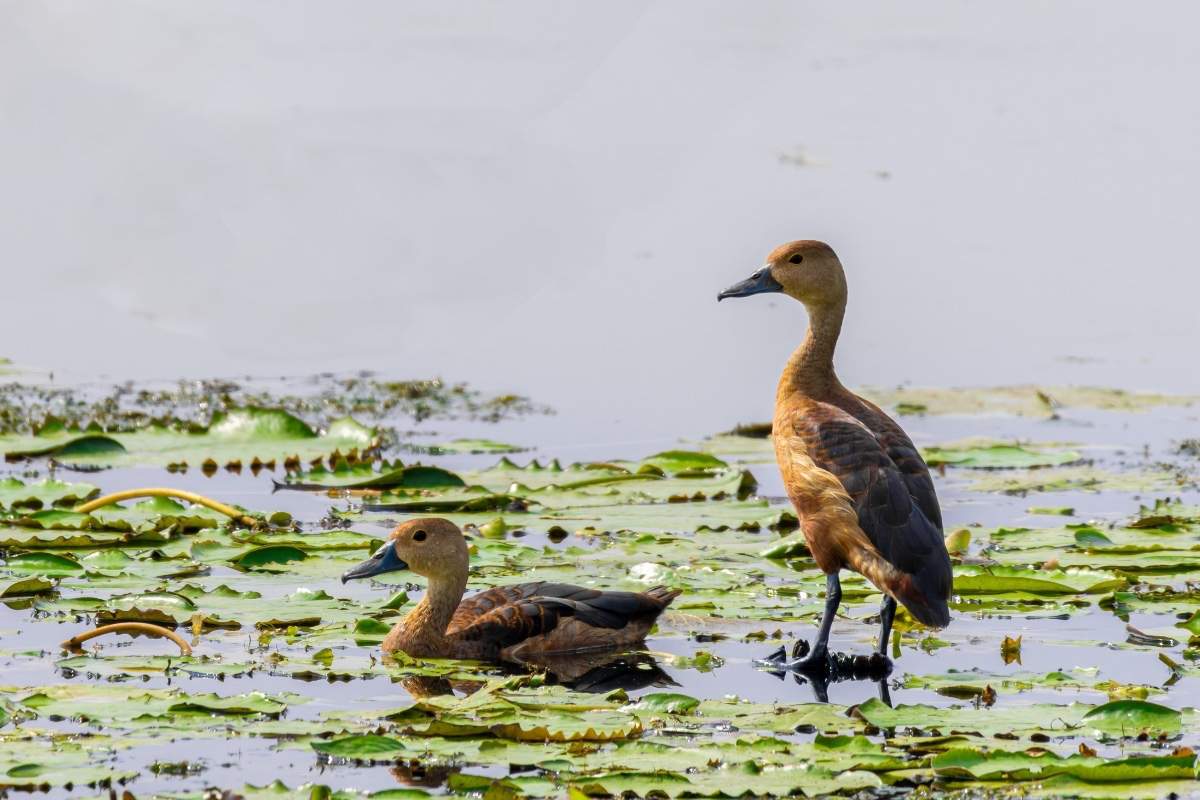The lesser whistling duck, found in Southeast Asia and the Indian subcontinent, is a nocturnal bird with a chestnut rump and loud wheezy calls. It feeds on plants and small invertebrates, nests in tree hollows or on the ground, and is known for its distinctive whistling flight.
The lesser whistling duck (Dendrocygna javanica), also called the Indian whistling duck or lesser whistling teal, is a nocturnal feeder. In addition to perching on trees, they occasionally construct their nests in tree hollows. This long-necked, brown duck makes a loud two-note wheezy call and has broad wings that are visible when flying.

Parental watch Parents guard the children as they swim.
The eye-ring is yellow to orange. Like other Dendrocygna species, they hold their head below their body when flying straight. Both sexes have similar plumage, with a dark crown. As they circle overhead, they make a wheezy, seasick sound while flying slowly but rapidly beating their wings. Being nocturnal, they often nap during the day. The alteration of the inner vane of the outermost main feather produces a noticeable whistling sound during flight.

Peaceful observers Perched on water, the ducks remains watchful.
They primarily feed on plants collected from the water and rice grains, along with small fish, frogs, and invertebrates like mollusks and worms. They dive and dabble in the water.

Still Vigil A lesser whistling duck is gliding through the wetlands.
Both parents incubate the clutch, which ranges from seven to twelve white eggs, though up to 17 eggs may indicate intraspecific brood parasitism. The eggs hatch in 22 to 24 days, and they can rear multiple broods in a season. Sometimes, parents carry their young on their backs.
Copyrights : All the photos and texts in this post are the copyright of John Thomas and Creative Hut Institute of Photography and Film. Their reproduction, full or part, is forbidden without the explicit approval of the right owners.


